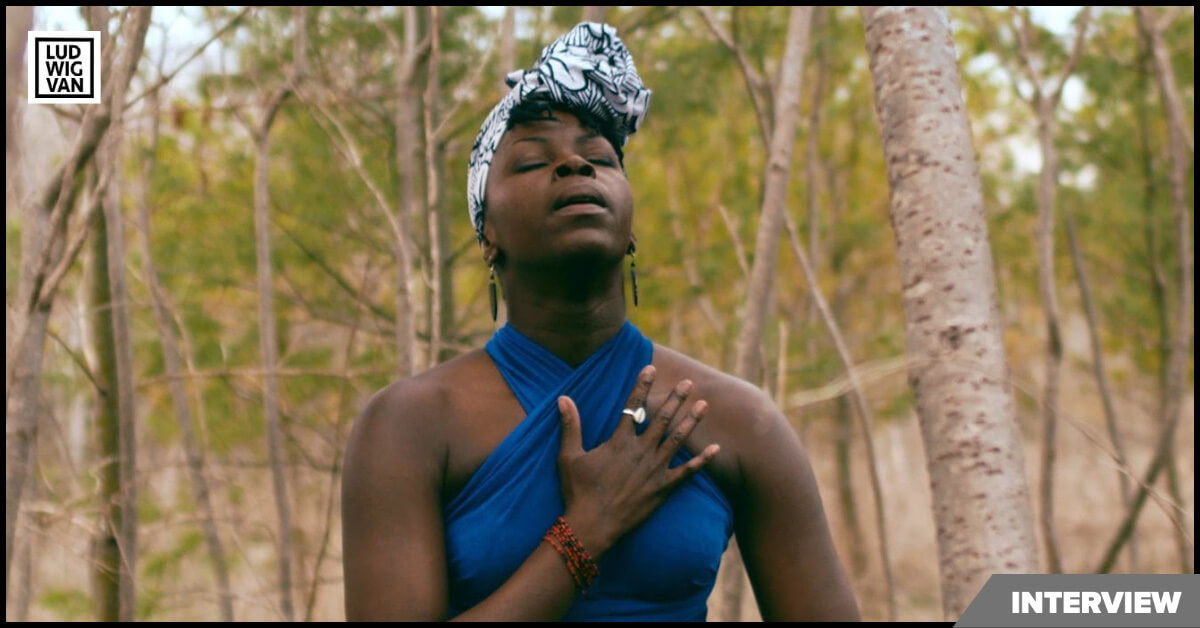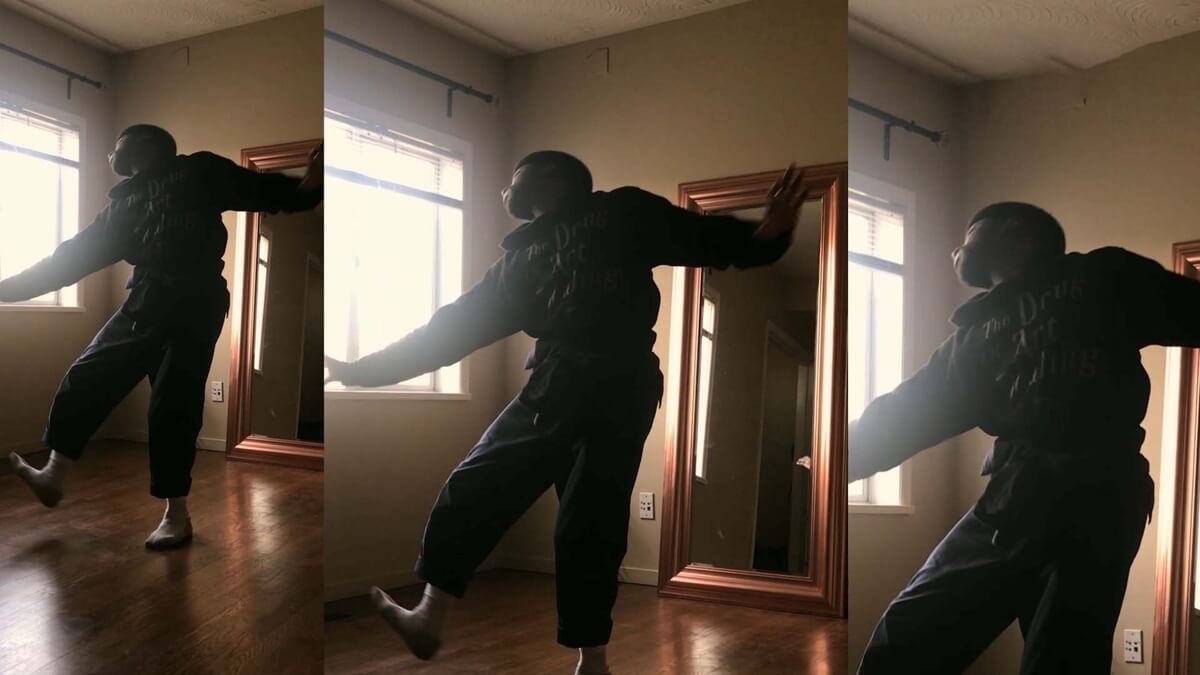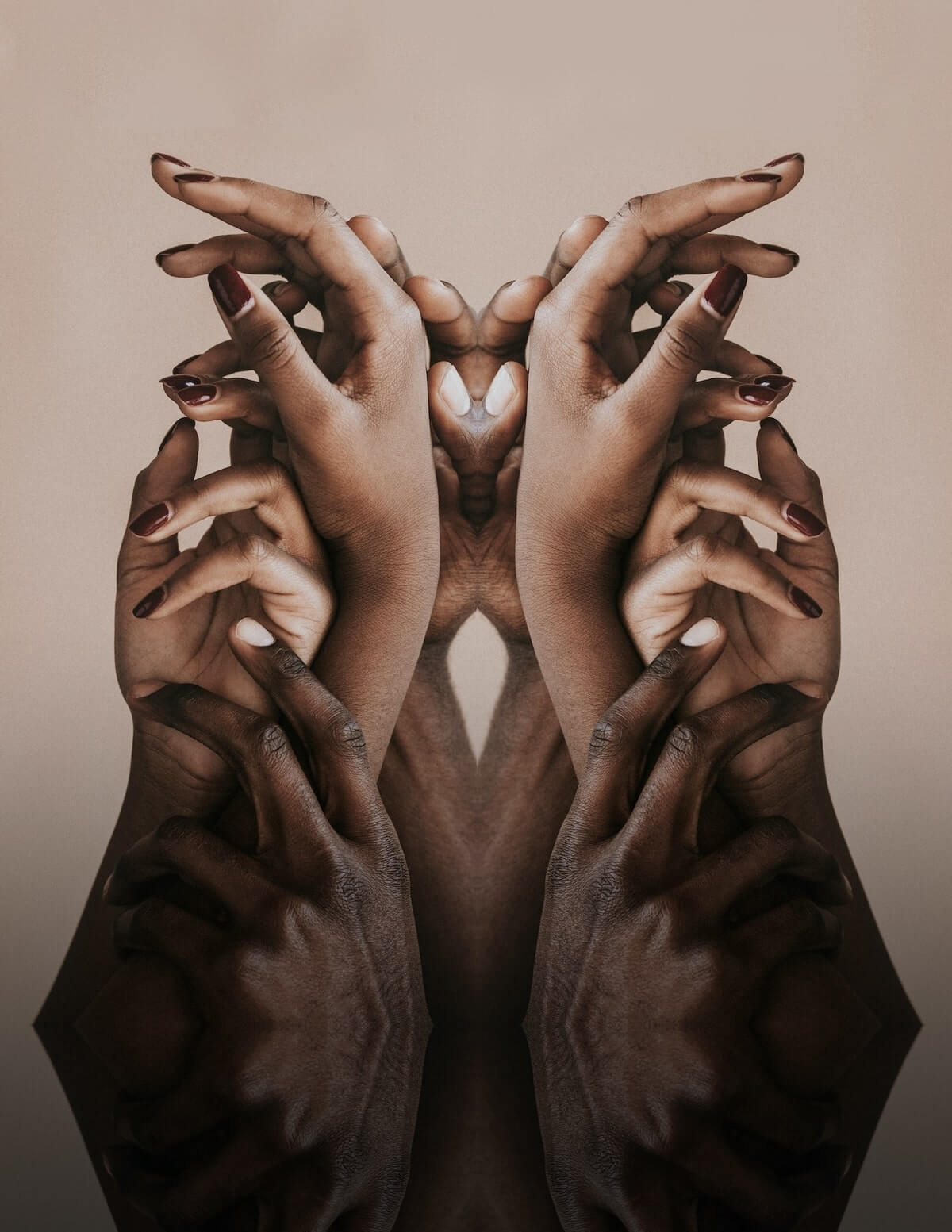
Fall for Dance North & Harbourfront Centre/Tessel, a dancefilm by Esie Mensah, streaming for free across Canada, debuting June 1 at tessel.film.
A Call to Black Dancemakers for Unity and Healing
The film Tessel is short — just 15 minutes long — but it is also very raw and very profound.
Performer/choreographer/educator/filmmaker Esie Mensah, 36, brought together 14 Black dancemakers from across Canada to have a serious conversation about what it means to be an artist in this turbulent time in history.
From this intense, seven-hour Zoom conversation, which touched on, according to the press release, the themes of ritual, rage, exhaustion, self-care, rest, and futurism, came the narrative for the film. Each dance artist also submitted a solo video, and these were then collectively edited together for the visual component. The dance styles include hip hop, ballet, contemporary, aerial/circus/acrobatics, jazz, house, African, streetdance, Afro-Caribbean, tap, waacking/vogue/burlesque, and Mensah’s own unique Afrofusion.
The film’s roots are anchored in Mensah’s own need to amplify Black voices. In a cunning fusion of movement and voiceover, the performers share their life experiences and home truths with the viewers. Tessel, however, is not a film about oppression and victimization, although they are certainly there. Rather, Mensah’s goal is to challenge the global discourse on race by moving past the traumas, while looking towards the victory of empowerment.
Mensah’s personal journey is reflected in the arc of the film, particularly her overcoming the negative experiences of shadeism, to be able to find her own agency and strength in how she views herself today.
I reached Mensah at her home in Toronto, and a lively conversation followed.
Part of your motivation for making the film was to get Black (and BIPOC) artists to address some unspoken truths, like shadeism. It’s not just white supremacy that Blacks have to battle, but intra-prejudice as well.
Canadians use the word shadeism. Americans and the British prefer colourism, but regardless the term, it means the same thing. There are degrees of Blackness, and when Black and BIPOC people accept the principle of shadeism, they are contributing to racism. The message out there is that darker skinned people are not as valuable, and we have to stop playing into this.
For example, I have dark skin, and I was supposed to be going to China to be a back-up dancer on a TV show, but the casting director was hesitant, thinking I was too dark for TV. I ended up going, but the only time I got an extra gig outside the show is when a singer asked for me personally.
Within the community of colour, everyone knows this unspoken truth. Black, South Asian. Latinx — to be darker skinned is less valuable. That’s why skin-bleaching is such a lucrative business. The most popular endorsement for the biggest Bollywood stars is for skin lighteners. In Brazil, parents lighten their children’s skin so they will have a better future. Many children of colour everywhere are told not to go out in the sun.
When the remake of The Rocky Horror Picture Show was shot in Toronto in 2016, what was so unusual is that they cast the strongest local dancers, regardless of skin tone. Ordinarily, Blacks are thinking, “Am I light enough to be hired?” Even then, darker skinned Blacks tend to be the villains and troublemakers in film and TV, and rarely the hero or heroine.
I gave a TED Talk in 2018, and after, an Indian woman came up to me and told me that one of her daughters was darker than the other, and they knew that she would have a harder time in life than her lighter skinned sister.
Wanting lighter skin is a bi-product of colonialism. I now believe that darker people are the purist form of the Black race. That’s why I created my piece Shades in 2018 which was nominated for a Dora Award. Shadeism has to become a public conversation. I do workshops for Healthy Dancer Canada at the National Ballet School, for example, where shadeism is a topic for discussion.
I know that choreographers in commercial theatre hire people for uniformity. I get that they don’t want anyone pulling focus — like having a really dark person in a chorus line — but when you unpack the whole idea of shadeism, and just how many in the BIPOC community accept it, it cuts deep. Shadeism is a poison.
The wonderful actress Lupita Nyong’o wrote a children’s book called Sulwe about a little girl who wishes her skin was lighter. The message is to learn to love oneself, regardless of your skin colour.
Our version of history is shifting, and part of that change is asking tough questions. The whole Black Lives Matter movement is about change, which includes intra-racial shadeism. We have to continue to chisel at the iceberg. We have to make conscious choices that lead to betterment, that make us more inclusive.

How did the film Tessel come about?
Ilter Ibrahimoff, the artistic director of Fall for Dance North, asked me to make a film that would amplify Black voices. He had seen my first film Revolution of Love, and knew I could speak candidly about issues.
He brought on Harbourfront Centre as co-commissioner, but 19 other dance organizations and companies from all over the county are also supporters. This means that all of them will be screening the film on their websites, which means a really wide audience.
What was your process in choosing the dance artists, and then getting them to talk about their lives and career experiences?
I knew some of the dance artists personally, or else had heard of them. Ilter and Harbourfront suggested some others. The key was to have a variety of styles. The artists also had to be known for the high quality of their work. They had to be on a par with each other. Quality was the standard bearer, not shape, size or colour. It’s their bodies that are speaking in the film.
The touch off point was bringing everyone together in conversation. In fact, I always knew that conversation was at the heart of the matter. I developed a set of pre-questions with Nicole Inica Hamilton that was sent out to everyone. She is a dance educator who hosts the dance show Turn Out Radio on CIUT.FM. She also acted as facilitator during the conversations because, as a performer in the film, I wanted to be just one of the dance artists.
A transcript was made of the Zoom meeting, and the text for the voiceovers was taken from that. I picked out words and phrases and strung them together. There were many script versions until I was satisfied with the result. Imagine the difficulty lifting sound bites from a Zoom call.
You had a spiritual advisor on the film. In fact, you’ve worked with Samson Bonkeabantu Brown on a regular basis.
Samson is a sangoma, or a healer. He takes care of the spirits, ensuring that they are working with us. He was there to make sure the dancemakers took care of self, and that the space was safe for everyone during the conversations. He also pushed the conversations into deeper waters.
Samson is also involved in how I deal with dancers. When I create a dance piece, I have the dancers fill out a lengthy Google form, so we are all mindful about why we are in the room. I want to create a safe space, and often, creation becomes a process of therapy as well. They know I care for them, so they can offer themselves into the piece.
What did you do to ensure some kind of uniformity in the individual videos that were coming from all parts of the country?
My instructions were to let the conversations we just had be the impetus for the solo. Let the conversations be the “why” for what you want to explore in movement. I also wanted them to perform honestly and authentically. Whatever they sent me, my job was to make them look amazing.
Some used videographers, and some just did it themselves on their cell phones. The videos were an open-ended canvas. I looked for the moments — to get that footage where joy came through. I had to be strategic.

Of course, we don’t know what music they danced to on the videos, because we never hear it.
It didn’t matter what music they used because I had a soundscape created by Meg Roe who integrated music from composer Kobena Aquaa-Harrison, and sounds from the videos like tap shoes. She’s literally worked with a Who’s Who across the country including Crystal Pite’s company Kidd Pivot. I wanted experimental sounds to play under the words. It’s the soundscape that ties all the different videos together. This atmospheric drone was difficult for me because as an Afrofusion choreographer, I’m rooted in rhythm, but I’m so happy with the score. It feels like the soundscape is carrying the words forward with a gentle pull.
There is an absolutely charming a cappella African song that begins and ends the film, and also is used between some speakers. Where did that come from? It seems so perfect.
It’s an original song by Lua Shayenne who also appears in the film, and is the singer. I danced with her company for five years so I knew about it. The language is a dialect from Guinea. She wrote the lyrics and Walter Maclean and Cécé Haba the music. It’s called “Mami Wata” who is the orisha, or god, of the ocean. The lyrics really have meaning for the film.
Mami Wata, wake up, Make the rivers flow, Make the rain fall, Wipe away our tears, Make the water overflow.
Mami Wata, wake up, Answer our prayers, Fill our calabashes.
We have heeded your counsels, Forgive our bad actions.
Wake up, wake up, Mami Wata.
The editing is outstanding. I gather you worked closely with editor Sonya Mwambu. The overlapping, the dissolves, the stop motion, and even multiple versions in one shot — the film seems to dance along with the dancers.
The fine line was this: How did the body and voice and soundscape line up? It was all about fine tuning.
I found the ending very provocative. The words spoken are “Rest is a revolutionary act”.
Slaves never were allowed to rest. My father, who is originally from Ghana, was juggling three jobs when he first came to Canada. I always knew that rest would be the end. It just felt right.
I really enjoyed the fact that voiceovers were not matched to the dancers, that there was a free flow of words over the movement. I thought that was clever.
There are only three times in the film that voices match the movers. In fact. Nicole and Samson also speak in the voiceovers. In creating the narrative, I did not use the names of the performers, but rather a number system — Speaker One, Speaker Two, and so on, which allowed for a freer perspective on the text.
I’m guessing the title Tessel comes from the word tessellation which I associate with the art of tiling. How does this relate to the film?
I look at it as the simplification of a pattern, meaning a conversation. We have to break out of cycles of bad patterns. We have to listen differently to people’s truths. I feel sometimes that when I want to talk, people don’t hear me.
What do you want people to take away from Tessel?
This film can’t be a one-time project. The conversation has to continue. The 21 dance organizations who either commissioned or supported the film have clearly understood that we have to amplify Black voices. They must look at how that process can work within their own milieu, and in the community at large. A bonus is that they now have 14 dance artists on their radar who I hope they will present in the future.
I also want people to feel changed. I hope Blacks will feel that they are being seen and heard, that they will feel connected to each other, and not contribute to racism through shadeism. I want Black artists to feel inspired, and to have more conversations with friends where tough questions are asked. I want Blacks and the BIPOC community at large to candidly share how we feel. I want unspoken truths addressed. I want to have continuing conversations about truth, honesty, courage and vulnerability within the Black experience, and what it means to be an artist.
And this is very important. For people of colour, we have to expose the seeds of racism that lie within shadeism. It means opening up a Pandora’s box, but it will lead to a different, but more important and progressive conversation.
#LUDWIGVAN
Get the daily arts news straight to your inbox.
Sign up for the Ludwig van Daily — classical music and opera in five minutes or less HERE.
- INTERVIEW | Actor Diego Matamoros Takes On Icon Walt Disney In Soulpepper Production Of Hnath Play - April 16, 2024
- SCRUTINY | Opera In Concert Shine A Light On Verdi’s Seldom Heard La Battaglia Di Legnano - April 9, 2024
- SCRUTINY | Lepage & Côté’s Hamlet Dazzles With Dance And Stagecraft Without Saying Anything New - April 5, 2024



